33:56.50S 8:24.37E Table Mountain and Cape Town 25th-27th April 2012 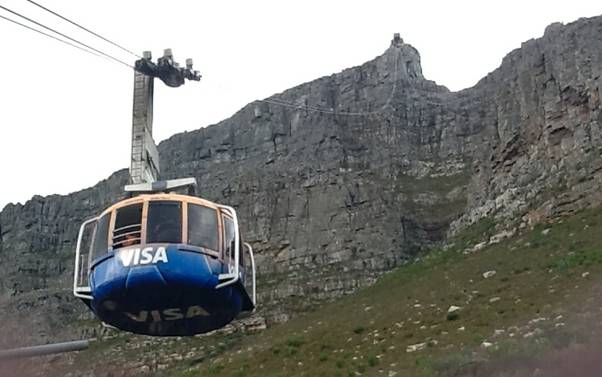
Up to the top of Table Mountain by cable car, the inside whirls around, to give everybody a good chance of the all around view! I didn’t go half price for my Birthday though, an offer to South African Citizens only! 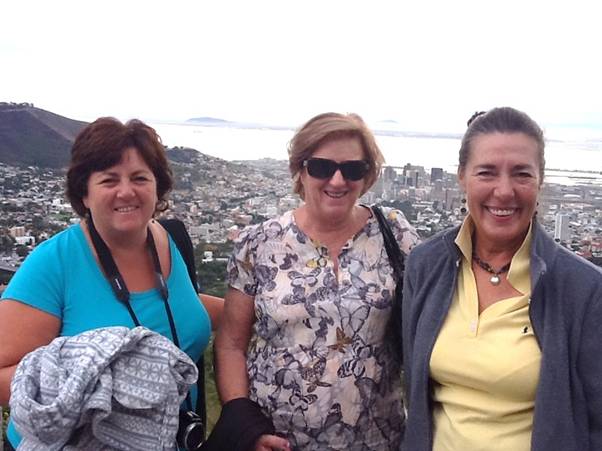
Weather threatening with showers, but not at all cold yet, Helen and Margaret haven’t doned their woolies yet! But the sunshine’s gone for the next week 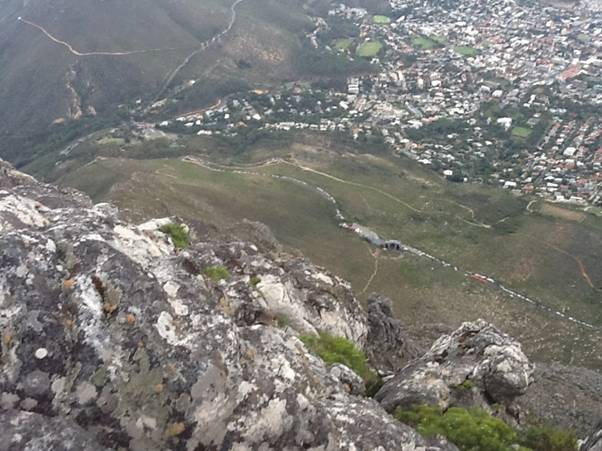
The view looking straight down to the cable car station, and the parked cars, aren’t they small? 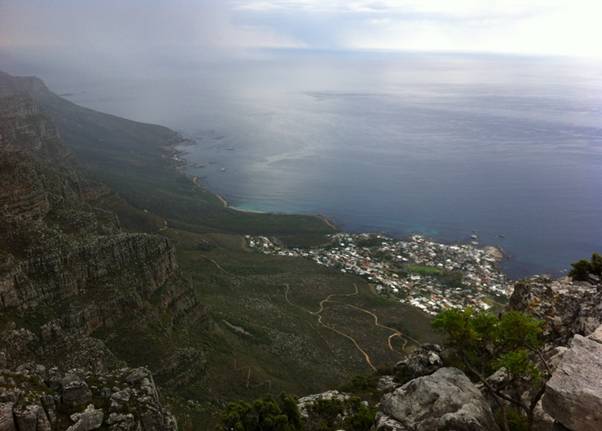
Here comes the rain showers! 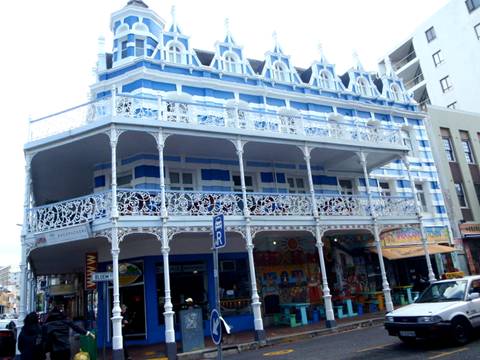
Long Street Hotel, delightful Rococco style ironwork and decoration Long Street is a famous bohemian hang out, lined with book stores, ethnic restaurants and bars. 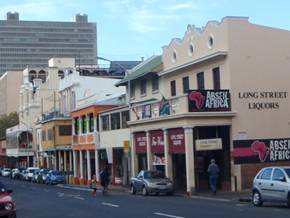
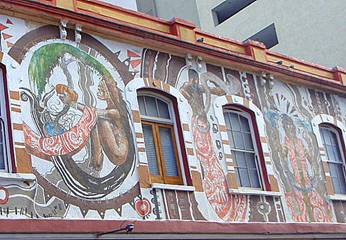
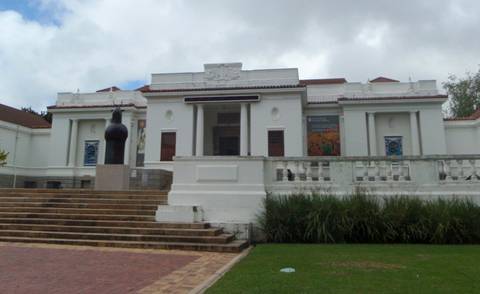
IZIKO National Gallery in Cape Town had a very good exhibition of the Native costumes worn by various tribes during the 1920’s, painted and well documented by an English woman who lived near Durban, in Natal, to indicate how each person identified themselves, as a maiden or betrothed, or married, and to which tribe she belonged. Twisted and coloured Hair and colourful glass beads, and the type of skirt they would wear all signalled a message, a labour of love indeed. All those costumes are mostly long gone now, so it was wonderful to see them so beautifully painted 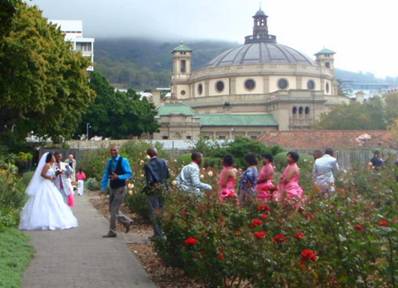
Wedding photos in the Rose Garden of the ‘Company’s Gardens 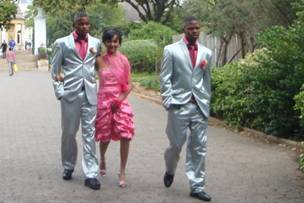 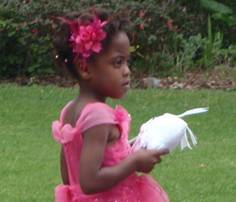
These gardens were established in 1652 to provide ships rounding the Cape of Good Hope with supplies of fresh food. 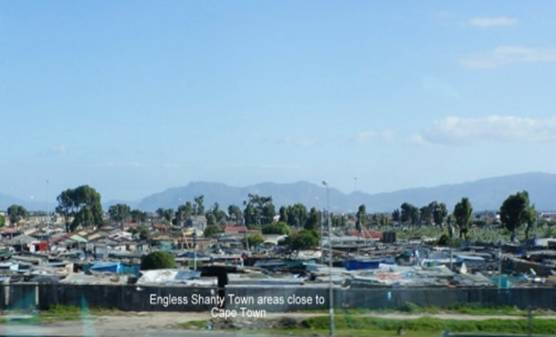
The endless shanty towns alongside the N2 into Cape Town We were surprised to see the extent of the ’Cape Flats’ (the coloured and black informal settlements on each side of the N2 highway that lead into Cape Town, but should not be surprised. Because the Apartheid system conflated its racial and economic policies, the communities of Cape Town remain almost as clearly separated in “racial’ terms as they were a decade ago. Poorer communities live on the peripheries of the Metropole and the state and city continue to struggle to meet the housing, infrastructure & services backlog. The legacy of poverty, and poor education and training for black communities of South Africa akes it difficult for large parts of these communities to find employment or to afford housing, services or transport to and from low paying jobs. South Africa is a power house for the whole of Africa, native people from all over Africa end up in Johannesburg and Cape Town to try and make some kind of a living, what one has to remember is that Cape Town was never settled by the black Africans its only the ex-slave, migrants and servants that were brought here by the whites. Needless to say some of them end up making artisanal craft products, which are just wonderful. Thankfully people who live here as well as the tourists enjoy collecting these objects, and keep their small home economy going somehow, as for the rest? The natives from Malawi, Kenya etc. who are well educated, usually get the better paid employment. South Africa has a large growing middle class, due to their education system which also is managing to get their children out of school with some of the skills that are needed by the employers. South Africa’s struggle against apartheid is by no means over, and it’s certainly found a new home in the extremely impoverished youth of the townships. Yes, some are being educated and I believe in that more than any other form of initial empowerment. However the government has a policy of black empowerment which is putting a lot of under qualified blacks in jobs that they are not suited for, thus causing problems in industry. But we fear they’re only learning of the mistakes of the past and not the power of the future. There will never be an answer to the problem, and that the chance was missed in 1994 due to the corruption of the current old and new ANC members of the Gorvernment. (Sounds the same story for most of our western capitalism, only since 2008!) 27th April, 2012 – Freedom Day, to celebrate anniversary of Nelson Mandela’s release 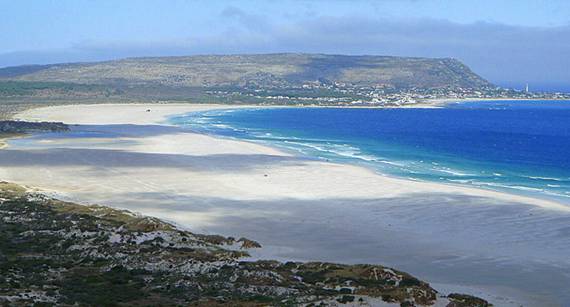
The gorgeous 4 mile pristine beach used for the film ‘Ryan’s Daughter’ near Noordhoek 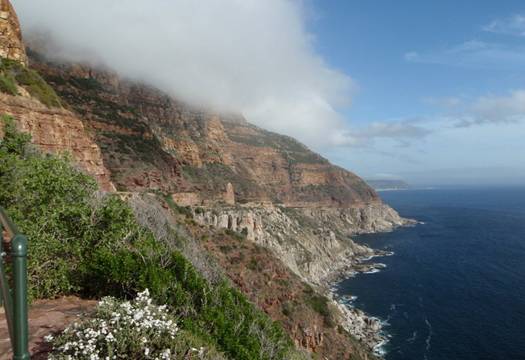
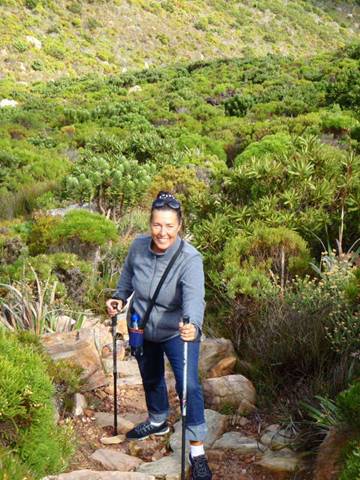
We take the opportunity to have a climb up the Chapman’s Peak hill, surrounded by wonderful Protea flowers and other ‘Finbos’ plants 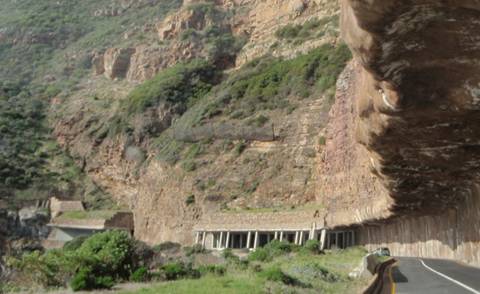
Chapman’s Peak road winds its way along the cliff edge, one of the most scenic drives in the world. 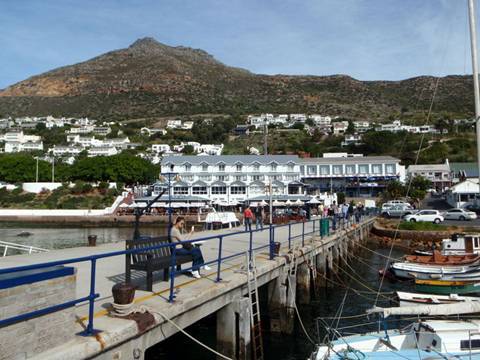
Simonstown Harbour Since the Cape’s winter storms caused extensive damage to the ships that were anchored in Table Bay, the Dutch East India Company decided, in 1743 to make Simon’s Bay their anchorage point in winter. From 1814, until handover to South Africa, it served as the British Royal Navy’s base in the South Atlantic. 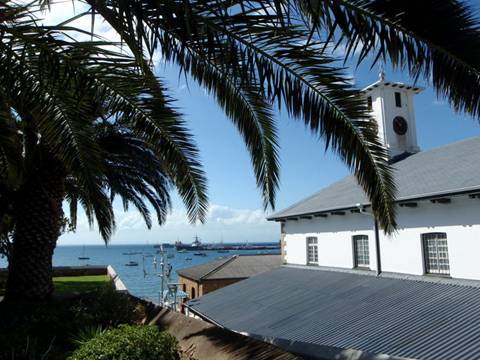
British Navy’s old headquarters, now a Museum 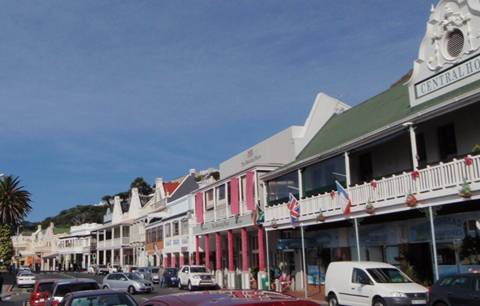
Characterful hotels and bars line the main street of Simonstown 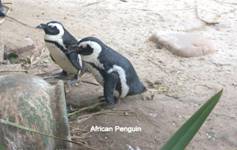
The Jackas penguins live very close to Simonstown, making nests in holes in between the huge boulders 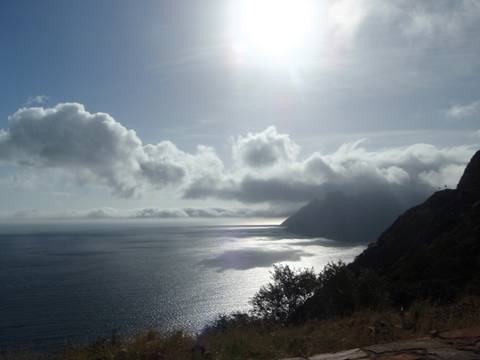
Stunning scenery along the West Coast Road back to Cape Town at the end of the day | 
